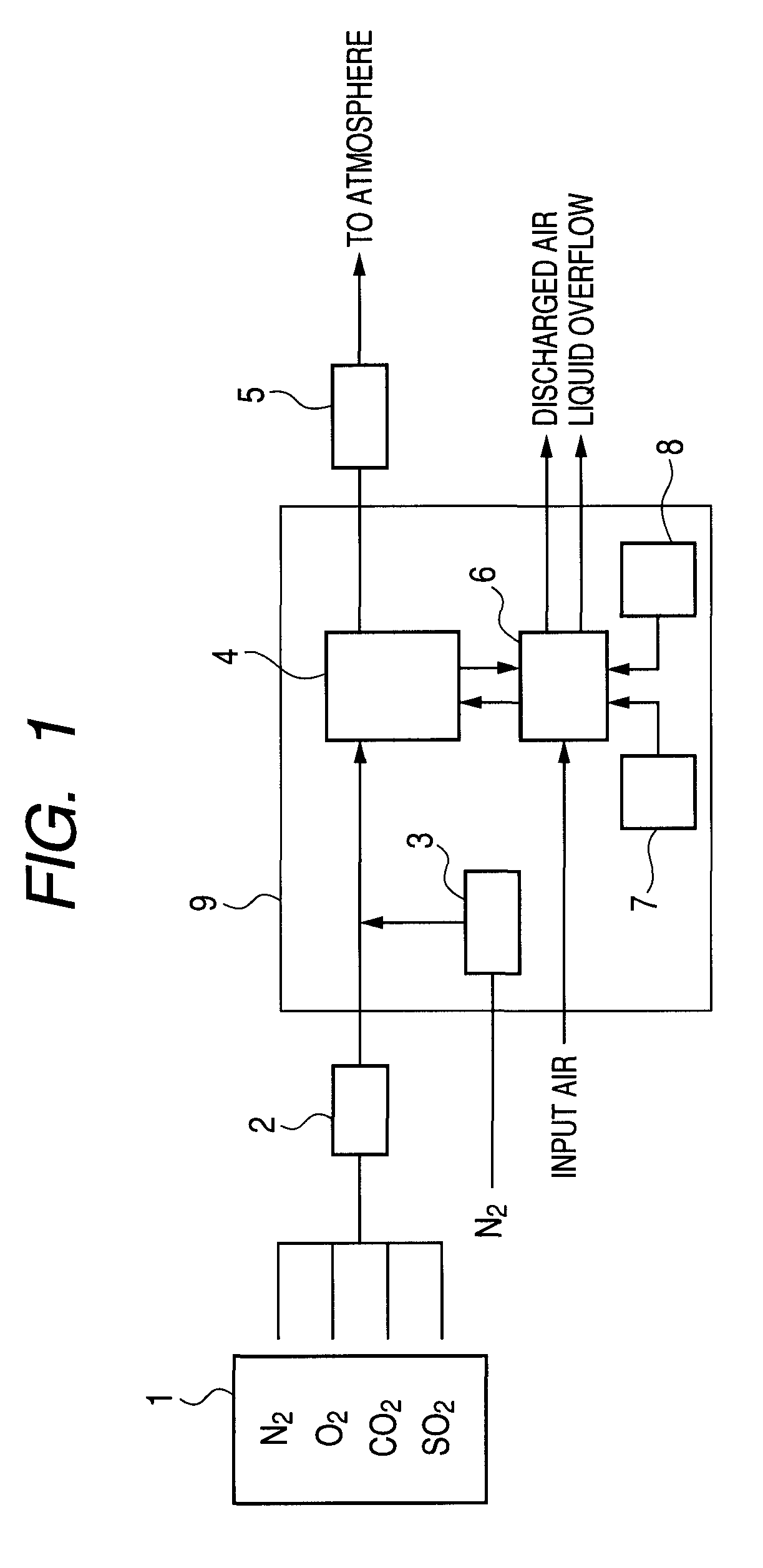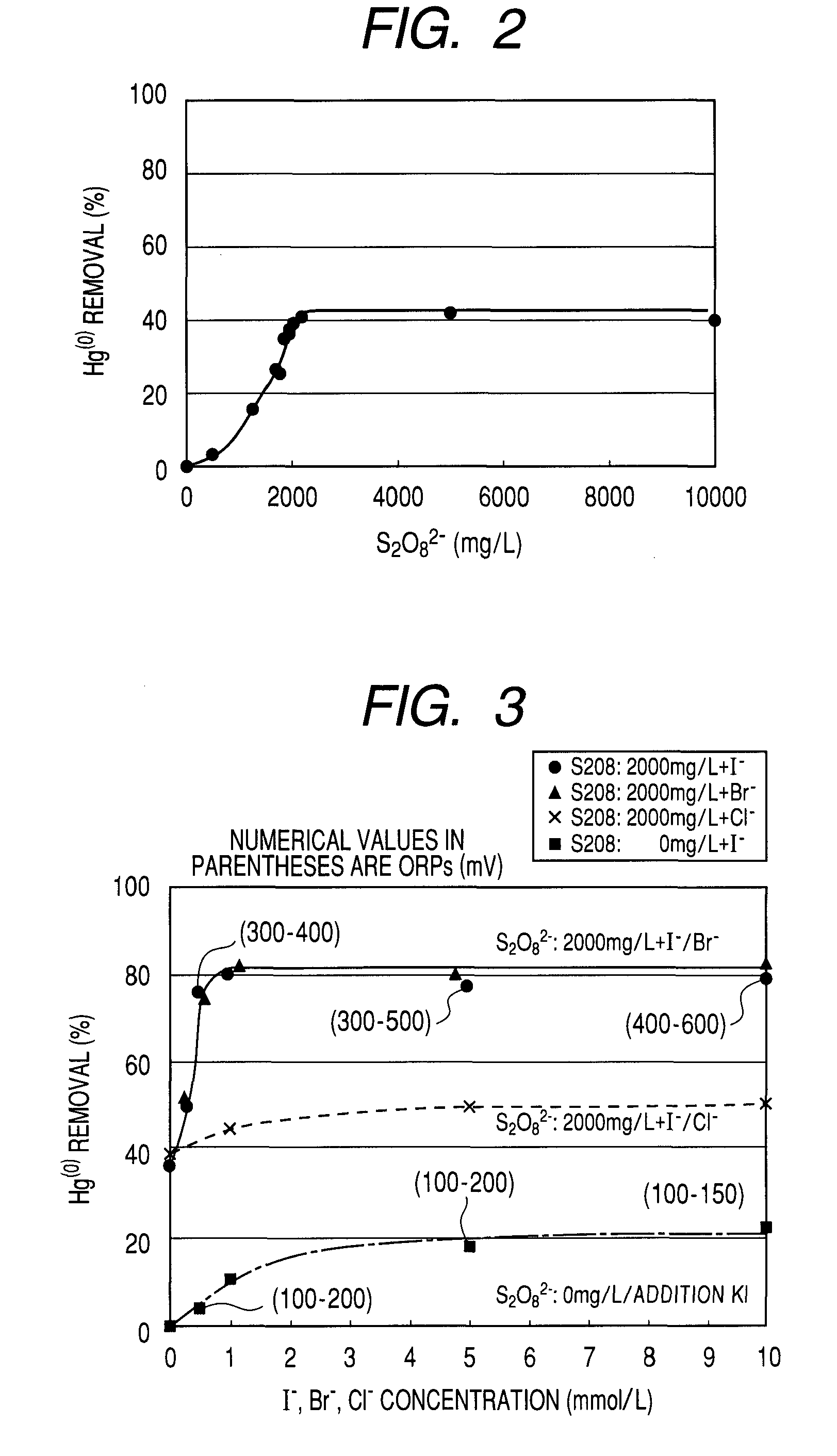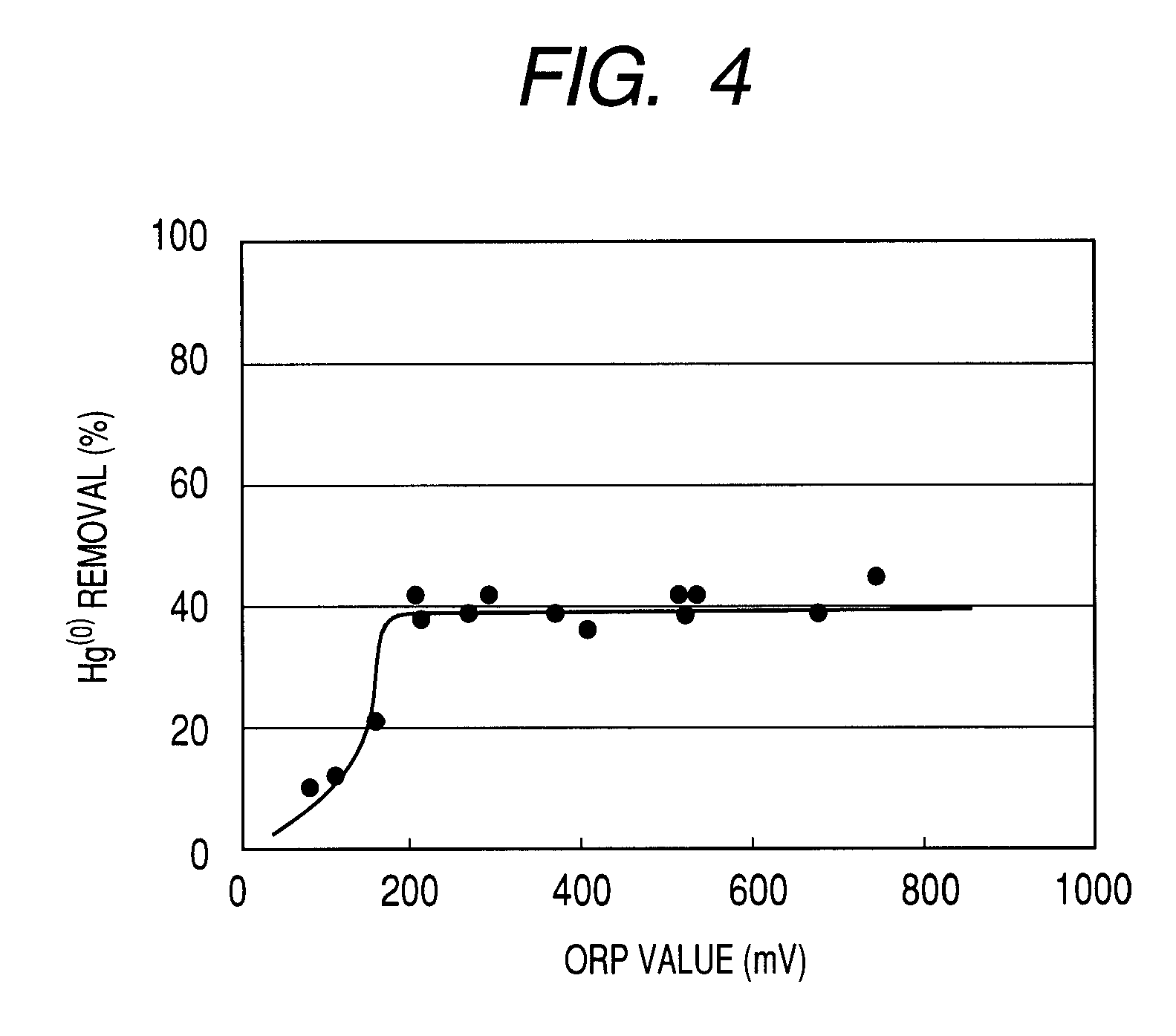Exhaust gas treating method
a gas treatment method and exhaust gas technology, applied in the direction of separation processes, hydrogen sulfides, sulfur compounds, etc., can solve the problems of emitted hgsup>(0) /sup>, additives such as fixing agents are not effectively exploited, and the removal rate cannot be stably maintained, so as to achieve stably and efficiently remove the
- Summary
- Abstract
- Description
- Claims
- Application Information
AI Technical Summary
Benefits of technology
Problems solved by technology
Method used
Image
Examples
example 1
[0044]An experiment of removing sulfur dioxide and mercury from simulated exhaust gas was conducted by using the labo test unit of FIG. 1. Mixture gas containing SO2 to a concentration of 1,000 ppm, O2 to a concentration of 5 vol %, CO2 to a concentration of 10 vol % and N2 taking the balance was supplied from the gas supply section 1 at a rate of 100 NL / hour and warmed and humidified to sufficiently contain moisture at 50° C. in the gas warming / humidifying section 2. Then, N2 was introduced into the mercury generating section 3 at a rate of 0.2 NL / hour to generate mercury vapor, which mercury vapor was added to the humidified mixture gas to produce simulated exhaust gas containing Hg(0) to a concentration of about 30 ppb. The produced simulated exhaust gas was then brought into contact with absorption liquid in the gas / liquid contact section 4 and the simulated exhaust gas was sampled both before and after the gas / liquid contact section 4 to observe the mercury concentration in the...
example 2
[0049]An experiment of removing sulfur dioxide and mercury from simulated exhaust gas was conducted by using the labo test unit of FIG. 1. Mixture gas containing SO2 to a concentration of 1,000 ppm, O2 to a concentration of 5 vol %, CO2 to a concentration of 10 vol % and N2 taking the balance was supplied from the gas supply section 1 at a rate of 100 NL / hour and humidified to sufficiently contain moisture at 50° C. in the gas warming / humidifying section 2. Then, N2 was introduced into the mercury generating section 3 at a rate of 0.2 NL / hour to generate mercury vapor, which mercury vapor was added to the humidified mixture gas to produce simulated exhaust gas containing Hg(0) to a concentration of about 30 ppb. The produced simulated exhaust gas was then brought into contact with absorption liquid in the gas / liquid contact section 4 and the simulated exhaust gas was sampled both before and after the gas / liquid contact section 4 to observe the mercury concentration and the concentra...
example 3
[0053]The experiment of this example was conducted under conditions same as those of Example 2 except that HgCl2 was added to exhaust gas to a concentration of 30 ppb and KI was added to the absorption liquid to a concentration of 2 mmol / L. However, a value of air 15 L / hour was selected for the aeration rate and the ORP was 400 to 600 mV under that condition.
[0054]Apart from this example, an experiment was conducted in a comparative example under the same conditions as those of this example except that absorption liquid that contained neither Na2S2O8 nor KI was employed and a value of air 40 L / hour was selected for the aeration rate. The observed desulfurization rate was not less than 90% but practically no Hg(0) could be removed.
[0055]Thus, it was found that the arrangement of this example could maintain a desulfurization rate of not less than 90%, an Hg(0) removal rate of not less than 75% and an HgCl2 removal rate of not less than 90% over 100 hours with an amount of air used for...
PUM
| Property | Measurement | Unit |
|---|---|---|
| concentration | aaaaa | aaaaa |
| concentration | aaaaa | aaaaa |
| temperature | aaaaa | aaaaa |
Abstract
Description
Claims
Application Information
 Login to View More
Login to View More - R&D
- Intellectual Property
- Life Sciences
- Materials
- Tech Scout
- Unparalleled Data Quality
- Higher Quality Content
- 60% Fewer Hallucinations
Browse by: Latest US Patents, China's latest patents, Technical Efficacy Thesaurus, Application Domain, Technology Topic, Popular Technical Reports.
© 2025 PatSnap. All rights reserved.Legal|Privacy policy|Modern Slavery Act Transparency Statement|Sitemap|About US| Contact US: help@patsnap.com



